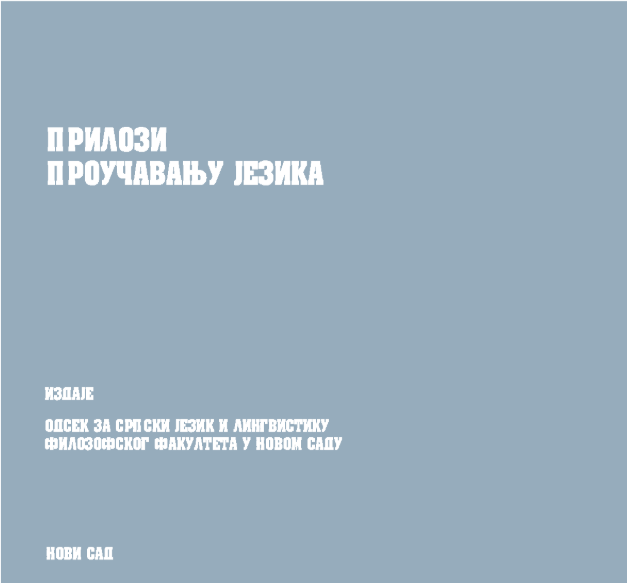Блискозначне именице 'основа' и 'темељ' и методе њихове семантичке диференцијације
Near-synonyms ’osnova’ and ’temelj’ and methods of their semantic differentiation
Author(s): Jelena PerišićSubject(s): Language studies, Language and Literature Studies, Theoretical Linguistics, Lexis, Semantics, Cognitive linguistics, South Slavic Languages, Philology
Published by: Филозофски факултет, Универзитет у Новом Саду
Keywords: collocations; osnova; temelj; semantic underspecification; synonyms; semantics
Summary/Abstract: The ability of individual lexemes to appear in different contexts, providing variable semantic realization, is often a result of their insufficiently specified semantics, and for this reason they are called semantic underspecified lexemes. Given the fact that the meaning of underspecified lexemes is determined based on the immediate environment in which they appear, collocations are a worthy minimal context to explore their meaning. In this paper we will examine the examples of collocations with lexemes ‘osnova’ and ‘temelj’, in order to determine their meaning, the degree of matching of their semantics and a conceptualization of terms denoted by these nouns. Before proceeding to the study, we will present the results of earlier research on this topic – research of Milka Ivić on semantic underspecification of lexeme thing and the research of Rajna Dragićević of lexeme ‘osnova’. Unlike the Rajna Dragićević who examined semantic underspecification of lexeme ‘osnova’ using a conceptual analysis, in this research we will primarily use collocation method, which is developed in Serbian linguistics by Boris Hlebec. A basic hypothesis is that the results of the use of these methods will coincide to a large extent, and that is an assumption which R. Dragićević states in her study. Corpus research represent collocation with lexemes ‘osnova’ and ‘temelj’, registered in the Corpus of Contemporary Serbian language made at the Faculty of Mathematics in Belgrade.
Journal: Прилози проучавању језика
- Issue Year: 2019
- Issue No: 50
- Page Range: 85-108
- Page Count: 23
- Language: Serbian

